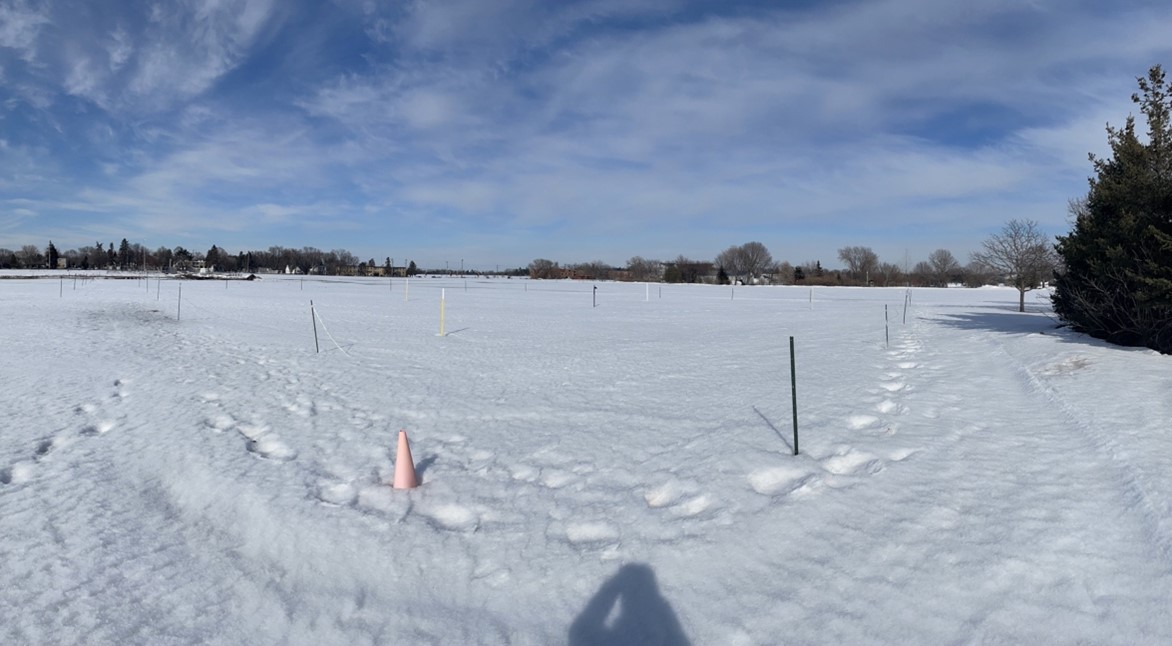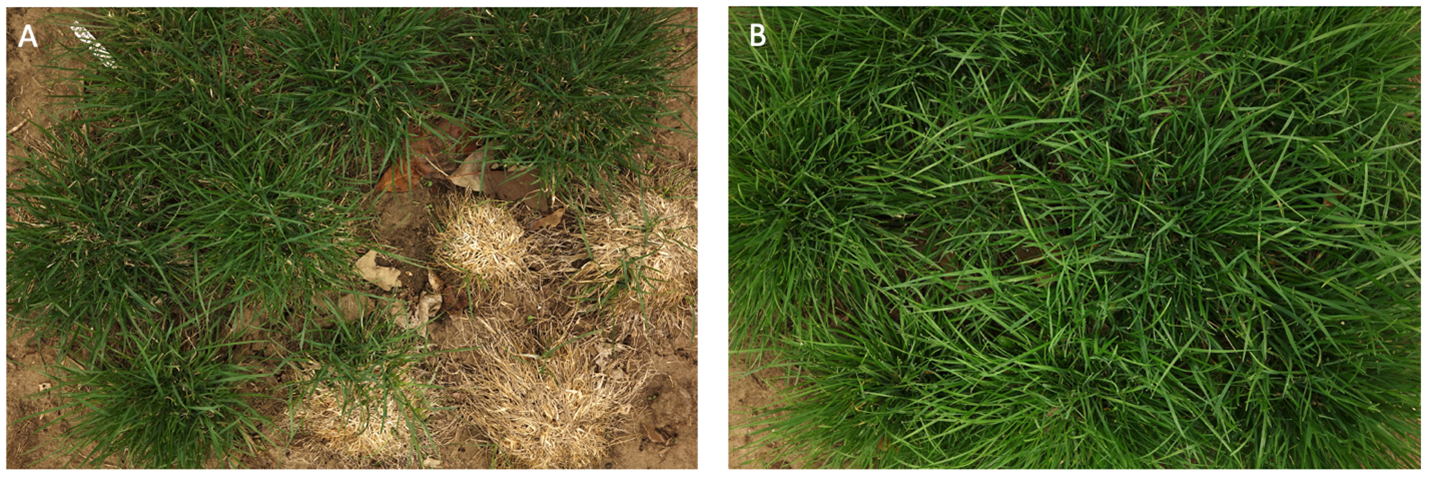By Maicy Vossen, University of Minnesota
After a long and snowy winter, it is time to assess winter damage and recovery of my perennial ryegrass nursery (see my previous blog Identifying traits enabling turfgrass crown resistance to freezing damage). As part of the WinterTurf project, this population of 100 accessions is being screened to identify traits that enable winter hardiness. Assessment began in the fall of 2022 and will continue through the summer of 2023. Fall data collection included monitoring photosynthetic stress and environmental conditions during fall acclimation. During winter, information on the plant micro-climate was collected through weather data and sensors installed throughout the plot. Just over a month ago, the snow finished melting off the plot (Figure 1).

This spring, temperatures quickly rose, and it didn’t take long for many of the perennial ryegrass accessions to green up. Our preliminary findings show that some accessions have not fully recovered from winter damage (Figure 2). After the snow melted, measurements were taken to determine if the perennial ryegrass accessions were experiencing any photosynthetic stress during the spring regrowth period; we took the same types of data as were taken in during fall acclimation. The accessions will be monitored throughout the summer to evaluate developmental stages of the plants.

In addition to field data, microscopic imaging of the vascular tissues (e.g., xylem) of freeze susceptible and freeze-tolerant genotypes will give us an insight into the anatomical features that enable winter hardiness. The data gathered in this project will be analyzed to find traits that are related to winter survival in perennial ryegrass. These traits will be utilized to develop a high-throughput vascular phenotyping method which will be used to evaluate freeze tolerance of turfgrass. Ultimately, we hope results from this work will aid in developing improved perennial ryegrass cultivars that can perform well in cold climates.